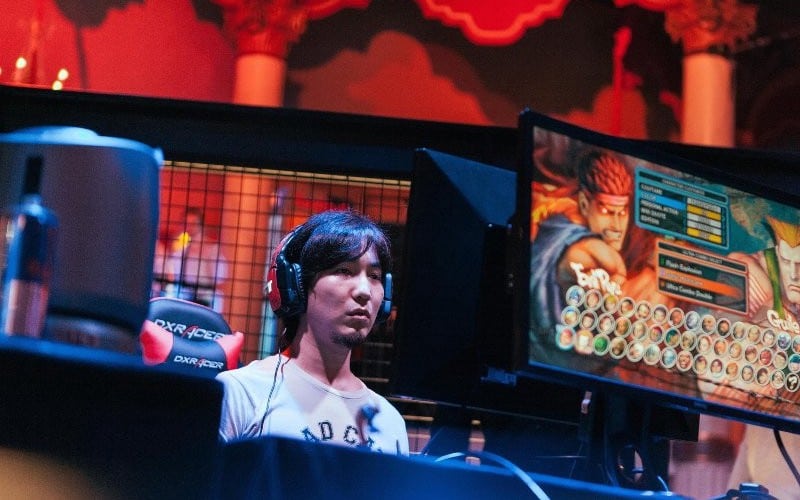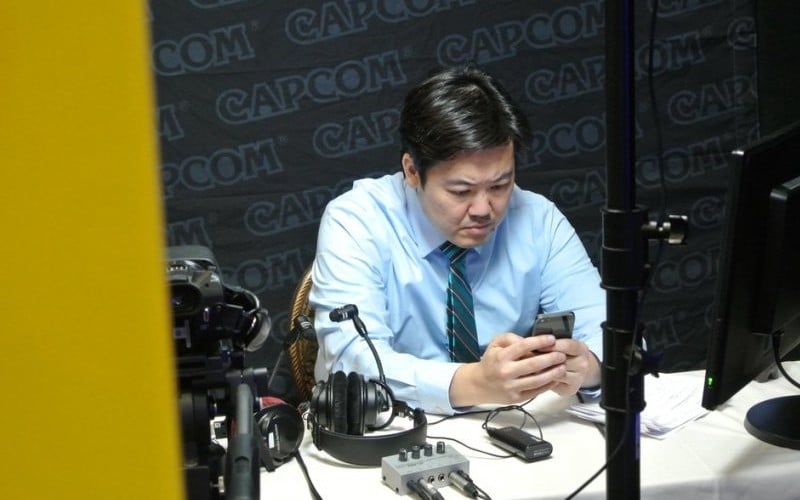Competitive gaming is extremely analytical.
My approach to marketing has roots in competitive gaming. I learned many valuable business skills while playing video games. For this article, I’ll be going over the 3 types of analysis that a Street Fighter player learns. This has direct application in not just growth hacking, but other aspects of business, too. But first, you’ll need a bit of context on what goes on behind the scenes of gaming tournaments.
On one side of competitive gaming, you have data analysis. Understanding data until it becomes actionable is a prerequisite to studying the game. After this, you must learn the layers of complex decision making in optimal play.
Another aspect to competitive gaming is the human element. This includes strategic planning, personal skill level, and physical dexterity.

The more a player can understand the game, the better. Understanding the data behind the gameplay will allow them to make better risk vs reward decisions. There are a finite number of moves in the game. Some are more difficult to pull off than others. This creates a web of decisions, limited by the player’s physical dexterity.
Optimal strategies require more physical prowess to execute. Stronger dexterity means you won’t have as much trouble with performing more powerful, risky, or optimal techniques and strategies.
Lab Monster: This is the term for the mad scientist-type person who puts hours into training to improve their skill. With enough practice, the full web of decisions is unlocked. The risk for these strategies is lowered through stronger execution. Their goal is to make the gap between technical limits of the game and their physical skill as small as possible.
The lab monster in marketing has a title: The Growth Hacker.
Growth hacking is experiment-driven marketing, according to Sean Ellis. The keyword here is experiment. Growth hackers are a different type of mad scientist. We create a hypothesis backed by data and run an experiment to test it. We repeat these experiments until we find tactics that are repeatable and scalable. The key difference is scale: technical limits of digital marketing are far less restraining than the rules in a video game.

Data Analysis
As mentioned earlier, it’s important to understand the data behind the game. It will allow you to know what your optimal options are in any scenario. Frame data will become the backbone of your technical understanding of the game. Beyond this, having full knowledge on game mechanics and the physics engine can shape your decision making process in-game.
Just like gaming, the start of any good growth hack begins with data analysis. In social marketing, the features of platforms are public knowledge. The mechanics and data behind these features are typically withheld. Without this knowledge, we cannot begin to understand the technical limits of a feature. If there aren’t any resources on it online, then it’s best to collect your own data. Form a hypothesis around a feature until you have a better picture of its technical limits.
Once you understand how a platform works, your experiments will be more results-oriented. You’ll begin thinking of the light at the end of the tunnel. You’ve got the data. Now it’s time to put it towards your goals.
Psychological Analysis
In Street Fighter, there are several player archetypes that represent one’s overall strategy. The lab monster we mentioned earlier is one of them. Their typical flaw is that they don’t have a strong feel for how humans actually make decisions in-game. Technical prowess aside, some can be defeated with better strategy.
Testing the opponent’s game knowledge and physical execution will reveal their personality. It will show you the patterns in the web of decisions your opponent has and how to adjust your own strategy. In any scenario of the game, there are only a certain number of moves available. Which ones do your opponent favor? What is their most likely reaction to your strategy?

“You just naturally start learning to read people and trying to “game” the situation. Being a good fighting game player often means you have a good read on the psychology of other people.”
James Chen
In growth hacking, we use buyer personas. Buyer personas are a fictional representation of your ideal customer, based on market research and real data about your existing customers. Who are they? What is a day in their life like? How do we contact this person without being intrusive?
After discovering where a buyer persona hangs out online, we now form experiments around that platform. If you’re a visually-focused brand, they’re likely on Instagram. By using buyer personas, you can make data-backed predictions on their behavior within a community. Growth hacking Instagram starts with manual testing. From here, proven tactics can be taken to the technical limits with Instagram automation. When approaching these limits, you have to consider community psychology rather than just individual psychology. How will an individual react within a group? How will the group itself behave as a whole? Theorizing these reactions using data will make your experiment’s predictions more accurate.
Risk vs Reward Analysis
In Street Fighter, there are risks involved with every attack you choose. Many can’t be safely used without your opponent having an opportunity to counter. There is depth to every button pressed. There are decisions made in every second of gameplay. Do you play relatively safe and minimise risks? Do you go on the offense and make high risk, high reward plays? It all depends on your opponent’s playing style. What would be the optimal way to take the match against them?
Balancing risk vs reward in growth hacking usually involves choosing if, and how, you should scale up a tactic. If it’s a technical exploit, you need to think about anti-spam measures and automated moderation features of a platform. How do you minimise the risk of your account getting banned? If it’s a community exploit, you need to think about the potential damage to your brand if your growth tactics were revealed. How would your customers feel if they knew how you converted them?
We can learn plenty from competitive gaming.
Before even thinking about growth hacking as a concept, I was a gamer. This meant doing research and chatting with other players about their strategies. It meant making logic-driven decisions in-game. It meant looking for glitches that broke the established rules of the game. If it isn’t outlawed by tournament rules, it’s legal. Play to win.
#1 Takeaway: The competitive gamer mentality of trying to find the most optimal ways to win are effective in marketing. Growth hackers first learn the overarching rules, restrictions, and community behavior. Next, we challenge our own assumptions by designing experiments with data-backed hypotheses. It’s a process built towards long term results that rewards finding exploits as early as possible.

